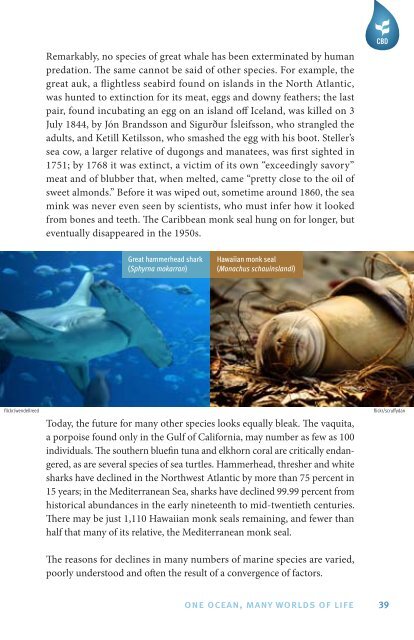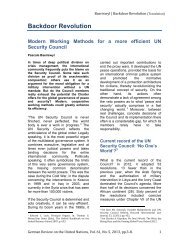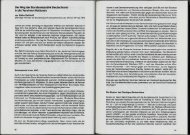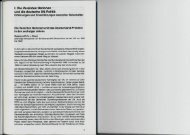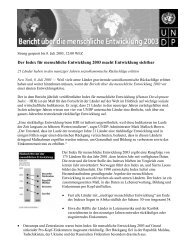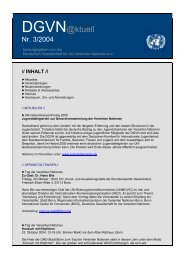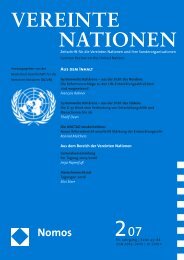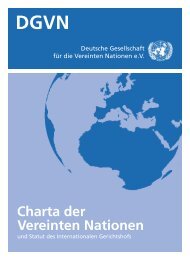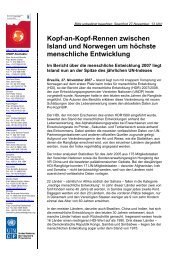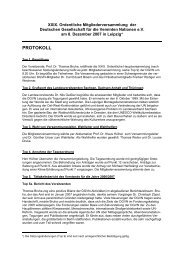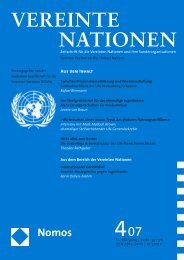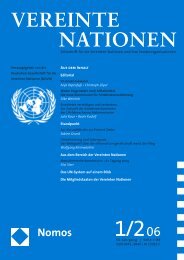One Ocean, Many Worlds of Life - Convention on Biological Diversity
One Ocean, Many Worlds of Life - Convention on Biological Diversity
One Ocean, Many Worlds of Life - Convention on Biological Diversity
You also want an ePaper? Increase the reach of your titles
YUMPU automatically turns print PDFs into web optimized ePapers that Google loves.
Remarkably, no species <str<strong>on</strong>g>of</str<strong>on</strong>g> great whale has been exterminated by human<br />
predati<strong>on</strong>. The same cannot be said <str<strong>on</strong>g>of</str<strong>on</strong>g> other species. For example, the<br />
great auk, a flightless seabird found <strong>on</strong> islands in the North Atlantic,<br />
was hunted to extincti<strong>on</strong> for its meat, eggs and downy feathers; the last<br />
pair, found incubating an egg <strong>on</strong> an island <str<strong>on</strong>g>of</str<strong>on</strong>g>f Iceland, was killed <strong>on</strong> 3<br />
July 1844, by Jón Brandss<strong>on</strong> and Sigurður Ísleifss<strong>on</strong>, who strangled the<br />
adults, and Ketill Ketilss<strong>on</strong>, who smashed the egg with his boot. Steller’s<br />
sea cow, a larger relative <str<strong>on</strong>g>of</str<strong>on</strong>g> dug<strong>on</strong>gs and manatees, was first sighted in<br />
1751; by 1768 it was extinct, a victim <str<strong>on</strong>g>of</str<strong>on</strong>g> its own “exceedingly savory”<br />
meat and <str<strong>on</strong>g>of</str<strong>on</strong>g> blubber that, when melted, came “pretty close to the oil <str<strong>on</strong>g>of</str<strong>on</strong>g><br />
sweet alm<strong>on</strong>ds.” Before it was wiped out, sometime around 1860, the sea<br />
mink was never even seen by scientists, who must infer how it looked<br />
from b<strong>on</strong>es and teeth. The Caribbean m<strong>on</strong>k seal hung <strong>on</strong> for l<strong>on</strong>ger, but<br />
eventually disappeared in the 1950s.<br />
Great hammerhead shark<br />
(Sphyrna mokarran)<br />
Hawaiian m<strong>on</strong>k seal<br />
(M<strong>on</strong>achus schauinslandi)<br />
flickr/wendellreed flickr/scruffydan<br />
Today, the future for many other species looks equally bleak. The vaquita,<br />
a porpoise found <strong>on</strong>ly in the Gulf <str<strong>on</strong>g>of</str<strong>on</strong>g> California, may number as few as 100<br />
individuals. The southern bluefin tuna and elkhorn coral are critically endangered,<br />
as are several species <str<strong>on</strong>g>of</str<strong>on</strong>g> sea turtles. Hammerhead, thresher and white<br />
sharks have declined in the Northwest Atlantic by more than 75 percent in<br />
15 years; in the Mediterranean Sea, sharks have declined 99.99 percent from<br />
historical abundances in the early nineteenth to mid-twentieth centuries.<br />
There may be just 1,110 Hawaiian m<strong>on</strong>k seals remaining, and fewer than<br />
half that many <str<strong>on</strong>g>of</str<strong>on</strong>g> its relative, the Mediterranean m<strong>on</strong>k seal.<br />
The reas<strong>on</strong>s for declines in many numbers <str<strong>on</strong>g>of</str<strong>on</strong>g> marine species are varied,<br />
poorly understood and <str<strong>on</strong>g>of</str<strong>on</strong>g>ten the result <str<strong>on</strong>g>of</str<strong>on</strong>g> a c<strong>on</strong>vergence <str<strong>on</strong>g>of</str<strong>on</strong>g> factors.<br />
<str<strong>on</strong>g>One</str<strong>on</strong>g> <str<strong>on</strong>g>Ocean</str<strong>on</strong>g>, <str<strong>on</strong>g>Many</str<strong>on</strong>g> WOrlds Of life<br />
39


